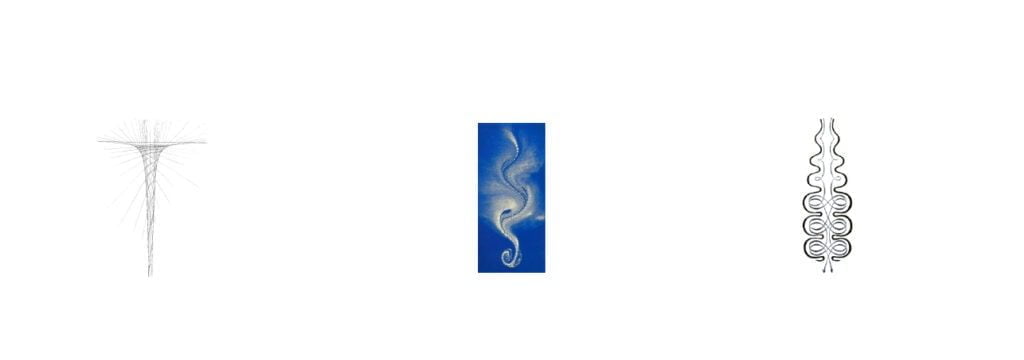Form in Flow is a course where we explore the nature of water in motion. The subject will be approached through experiments and art, with a special focus on rhythmic flow, Flowform sculptures and vortexes. The course will be held at Seyðisfjörður on the 8th-11th. August 2024. The fjord itself and Gamla Netagerðin will be our laboratories.
Dates: August 8 – 11, 2024 (4 days)
Number of participants: 12
Course fees: 50,000 ISK (€337)
Course fees include: instructors, facilities and materials, and a light lunch. Housing is not included. We will assist in finding accommodation.
Application deadline: May 15, 2024
More information and registration: Ráðhildur Ingadóttir provides more information. Contact us at radaingadottir@yahoo.com
The Technical Museum of East Iceland supports this project.

Vortexes can be said to be one of the basic movements of the entire universe. This can be seen, for example, in the form of galaxies, weather systems, plant growth, in the air around us, etc. During the course we look at eddies and rhythms in water, the structure of shells and other natural forms, where we clearly see the effect of the flow on the way the organism is formed. We draw geometric shapes in motion, mold shapes in clay, make rhythmic body movements, and take a walk along the river bank from the mouth to the source.
The instructors for the course are Simon Charter MEd, a holistic scientist and designer of flow forms who has worked with water for 35 years, Ráðhildur Ingadóttir visual artist and Erla Reynisdóttir who is an expert in physical movements.
Each day begins with meditation/contemplation by a stream, river or ocean. We watch and listen to the water, experience its flow and take this experience with us into the day.
In Gamla Netagerðinn, we will do joint water experiments where we use large jars, Plexiglas cylinders, long trays and a water channel that we make ourselves out of clay.
We will have group exercises where we do movements based on spirals, swirls, waves and rhythms.
The phenomenon of Flowform will be introduced, and each of us will mold a small form out of clay.
We will explore movement in simple projective geometry, “from growth measure” to “path curve” and three-dimensional forms seen in living organisms. And we will draw other geometric shapes in motion, such as Pascal Limaçon.
On one of these four days, we will walk along the Vestdalsá river in Vestdalur from the sea, to the source of the river which is in Vestdalsvatn. We will explore the river and its waterfalls and do experiments in the river, including an experiment done by Leonardo da Vinci where he floated sawdust in a river to study and draw the movements of current and flow.
As mentioned above, one aspect of the course is an introduction to the Flowform Sculptures. The forms allow dynamic yet natural movements in the water, thereby they can enhance its ability to regenerate life. Flowforms are today produced in many countries and used in agriculture and irrigation, food production, water purification, health and cosmetics manufacturing and other sectors.
These forms were originally discovered in 1970 by artist and scientist John Wilkes (1930-2011) Wilkes based his work on the research of George Adams (1894-1963) and Theodor Schwenk (1910-1986) whom he worked with in the nineteen seventies. Many designs have been created by John Wilkes and colleagues since their discovery. The path curve geometry originated in the 19th century with Felix Klein. Its connection to natural form was discovered by George Adams and fully revealed by Lawrence Edwards and John Blackwood.

